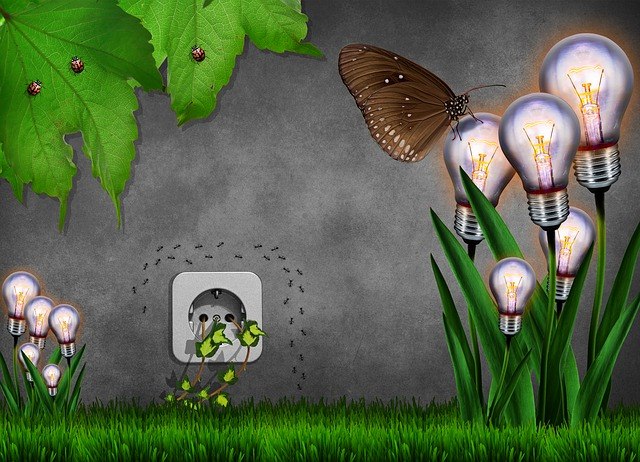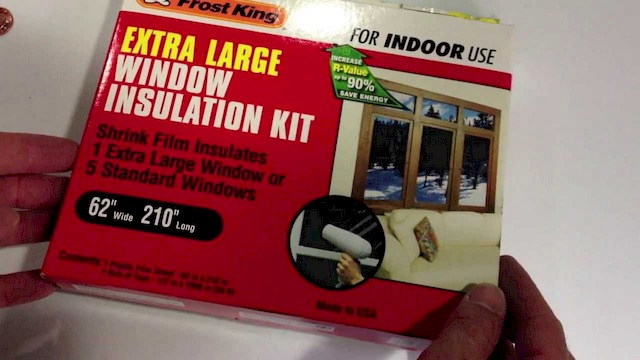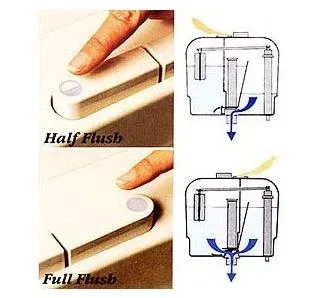Find energy-saving items and information about how to save energy at home here.
Most people only think of ways to conserve energy during the winter, but actually, it is a topic that can and should be practiced all year long. Always think about energy savings when doing any home improvement projects.

Long gone are the days of cheap electricity and/or fuel to heat our homes. In today’s economy, every penny counts, and doing just a few things on how to save energy at home can save a lot of pennies.
How to Save Energy at Home
In this article, we will look at a number of very reasonable and inexpensive energy-saving ideas that you can do around the home that will add up and reduce energy bills.
Some of these are quick, easy, and inexpensive things you can do yourself while others are larger projects that are updating the necessities of life.
Let’s take a look at some energy conservation techniques and tips that will help to save you some money around your home.
Read Also:
- Make Your Home Energy Efficient by Implementing These Newly Found Tips
- When There’s No Time to Lose: Learn to Install a Water Heater in 10 Steps
- Steps in Replacing a Thermocouple in a Gas Water Heater
- Consider Energy Saving Tips when Building a New Home
- Understand the Benefit of Getting a Furnace Tune-Up
Heating and Cooling
Unless you don’t have an air conditioner/heat pump or if you use a wood burner or pellet stove to heat your home, the majority of your energy bill is used on heating and cooling your home.
One of the first things to consider is the age of your furnace, air conditioner, or heat pump. If they are more than 10 years old, they could be very inefficient compared to units today.
Just replacing old units with newer, more efficient units can really lower energy bills quite drastically.
Yes, no one likes to incur the expense of replacing a heating and cooling system but these newer energy-saving devices will not only dramatically cut the energy bills they will also give you peace of mind during the coldest of winters or the hottest of summers that they will work.
I recently replaced my old furnace and AC with a new heat pump and have already noticed much lower utility bills.
So what are some other energy-saving solutions you can easily do with your heating and cooling?
- Either use a programmable thermostat or remember to turn down the thermostat when going to bed or leaving the house for the day.
- Clean or replace furnace filters as needed. Some filters need cleaning and others are to be replaced. Check them once a month.
- Make sure registers are not blocked in rooms where you need them.
- Close off registers and shut doors to rooms you aren’t living in daily.
- The sun can shine brightly even on the coldest days. Open curtains and shades to let that sunshine in and naturally help to heat your home. Close off curtains and shades on the sunny side of the house in the summer.
- Install solar-powered attic fans to remove the heat from your attic without using electricity. The initial cost of these items is not bad and the savings of removing heat while using solar will pay for itself in a hurry.
Water Heater
Your water heater, whether it be a tank water heater or an on-demand water heater, is the second-largest black hole in your home’s energy bill.
Like an old furnace or air conditioner, the age of your water heater can affect your energy bill. Older water heaters aren’t near as efficient as the new water heaters.
Good, efficient water heaters are pretty inexpensive these days and go a long way toward making an energy-efficient home.
Here are a few things on how to save energy at home you can do with your water heater to conserve energy.
- Set the water heater thermostat to 120 degrees. Some water heaters ship with the factory preset higher. The 120-degree setting will save money by not having to maintain a hotter temperature and actually is quite sufficient to support a family’s needs.
- Drain a small amount of water from the tank every few months. This will remove sediment that can affect the efficiency of the heater and prematurely wear it out.
- Install pipe insulation on about the first six feet of both the hot and cold pipes leading from the water heater.
Air Leaks —How to Save Energy at Home

Air Leaks or drafts in your home suck any energy efficiency you have out the window, under the door, or through fixtures.
These are easy and inexpensive to seal with weatherstrip, caulk, and foam seal. The hardest part is tracking down the drafts.
We used to talk of walking around with a candle and holding it by door cracks, windows, electrical outlets, and fixtures to see drafts.
If the candle flickers, then there is a draft blowing on it. With today’s liability issues, people don’t recommend candles now, instead of saying to use incense or a smoke pen.
Whatever you use, once you find a draft you can use weatherstrip or caulk to seal drafts. You can fill larger openings that you may have in attics or basements with expanding foam seal. I love this stuff.
Other Air Leaks to Look for and Fix
- If you put your hand in front of an outlet or light switch that is on an outer wall, you will probably feel a draft. Get outlet and switch foam backers that go behind the outlet cover that insulates.
- Check and seal areas where plumbing, electrical, and ductwork enter the home. Also, be sure to check the entry spot of cable or satellite TV cables coming into the house.
- Check your seals and thresholds at the bottom of doors that lead outside. If they don’t seal well when the door is shut, you may need to replace them or get a draft stopper.
- Close off the fireplace damper when not in use. An open damper will bring a lot of cold air in from the chimney when the fireplace is not lit.
Windows —How to Save Energy at Home
Windows can make a huge difference in how to save energy at home. Energy-saving windows will efficiently keep cold air out in the winter and hot air out in the summer.
If you have single-pane windows, you are more than likely losing a tremendous amount of energy through them.
Just because you have energy-efficient windows doesn’t mean they are in the clear toward saving energy in the home. If caulking has broken down around the window frame, air will get in.

If insulation was not tucked well between the house framing and the window frame, air will get in. If this is the case, you will feel air coming from the window molding.
Here are some additional electricity-saving tips for windows:
- If you have old single-pane windows and can’t replace them right now, consider putting up storm windows on the outside of each window.
- You can also put up clear plastic over your windows that have been drafted. These are easy to put up and usually adhere to your window molding or frame.
- Close curtains at night to cut down the drafts. Not real effective but it helps.
Lighting —How to Save Energy at Home

No article on how to conserve energy would be complete without a few words about energy-saving lights.
Yes, only a small part of your electric bill comes from lighting, but this is one quickest and easiest ways to save energy at home.
Upgrades from the traditional incandescent include energy-saving halogen incandescent bulbs, compact fluorescent lamps (CFLs), and light-emitting diodes (LEDs).
The energy-saving halogen incandescent bulbs can last about three times longer than traditional bulbs without much more cost.
The compact fluorescent lamps (CFLs) can last about 10 times longer than traditional bulbs and use one-quarter of the energy. As the name says, these are essentially mini fluorescent lamps.
CFL bulbs are a little more expensive than traditional bulbs but you get it back in energy savings and them lasting longer. I have looked for them at places like Home Depot and Walmart, but the best prices by far I have found at Amazon.
CFLs contain mercury and are a hazard if broken. If you break one of these, do not touch the glass or debris with your bare hands. Visit epa.gov/cfl for cleanup and safe disposal steps. Not to scare you away, you just need to be cautious.

Most home improvement stores will recycle these if you take them there. These cost a bit more but pay for themselves over time with the energy savings and lifespan.
The light-emitting diodes (LEDs) are the newest, most efficient, and longest-lasting.
LEDs use only 20-25% energy of traditional bulbs and last 25 times longer. Because they are still so new, they are pretty expensive. They should get cheaper as time goes on.
These are some good options for energy-efficient lighting. You just have to weigh the options and go with what works best for you right now.
Appliances and Electronics
Your refrigerator, freezer, dishwasher, washer, and dryer consume a large chunk of energy.
If any of these are more than 10 years old, they may not be very efficient. Some people have second refrigerators and freezers in their basement or garage that are 20-30 years old or more.
With the energy they consume, you could have paid for a brand new one in a short time. Most are no longer efficient to keep.
When shopping for new appliances, don’t just pay attention to the cost, but also the cost of running that appliance.
Every new appliance has a big yellow Energy Guide card that will tell you how efficient that model is and how much it would typically cost to operate it in a year.
If you have newer appliances, keep the seals clean, periodically defrost a manual defrost freezer, and don’t run extensive cycles in the dishwasher and washer.
Have you noticed that all electronics now have lights that stay on even when power is off? These are vampire lights and will suck away your attempt to save on electricity.
Computers, printers, TV, DVDs, game systems, stereos, they all have them. When you turn off your lights at night to go to bed, you can still walk around fine because of all these little lights. They never go off.
You can, however, make them go off by plugging them into a power strip then turning the power strip off at night or while away. Every little bit helps.
Insulation —How to Save Energy at Home
Insulation is a great way of conserving energy and comes in a number of different shapes and R-values. The best part is that you can easily do it yourself.
The most common type of insulation is the roll or battery, but there are also loose-fill rigid foam and blown-in foam.
Each has its own pros and cons of best, cost, and ease of installation.
Places to consider insulating or adding more insulating:
- Attic – If you have an older home, this is one place that you probably need more insulation. A great amount of cold air in the winter and hot air in the summer comes in here.
- Walls
- Floors
- Basement/Crawlspace
Adding insulation is one of the great home energy-saving tips on how to save energy at home that you can do to really help your home’s energy efficiency.
If you are unsure exactly how and where to insulate, contact a qualified contractor. You want to make sure that you don’t disrupt any proper ventilation.
Bottom Line
I know that this is a lot of information and no one can be expected to do all of the energy conservation tips on how to save energy at home listed here, but doing a few of the ways to save energy on how to save energy at home listed here you will start to put a dent in that energy bill.
Take a look around the house for some of the things you can do. If your furnace and air conditioner remind you of yesteryear when you were much younger, then it is probably time to replace them.
The little things can add up pretty quickly without much of a sacrifice.
Good luck, I hope you found this article on how to save energy at home can be useful for you.










